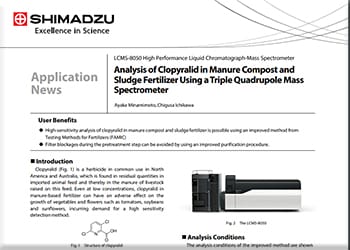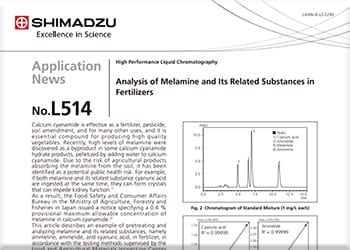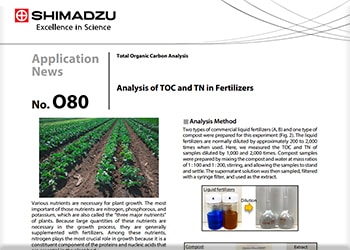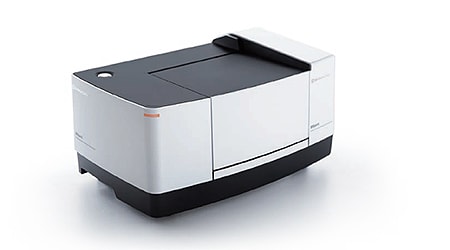Fertilizer Testing Methods
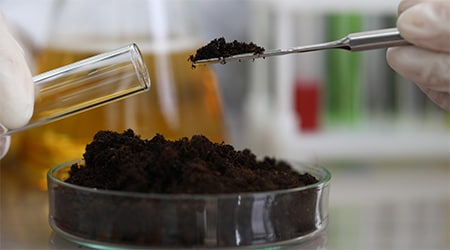
Fertilizer raw materials must be identified by appropriate methods such as visual observation, detection of active ingredients by qualitative tests, and confirmation by equipment.
In order to ensure the quality and fair trade of fertilizers, specific analytical methods have been developed. These methods are used to confirm the percentage of main or guaranteed components and to measure the quantity of harmful compounds in fertilizers.
Application News
FTIR
Analysis of Resin-Coated Fertilizers by FTIR: Analysis Conforming to “Identification Methods for Fertilizers (2020)”
Analysis methods for fertilizers, which are important for preserving fertilizer quality, are provided in “Testing Methods for Fertilizers (2020)” and “Identification Methods for Fertilizers (2020).” Identification by Fourier transform infrared spectrophotometry (FTIR) was added to “Identification Methods for Fertilizers (2020).” Qualitative analysis by measurement of the infrared spectrum by FTIR can be completed in a short time without complex sample preparation.
Application News No. A638 introduced an identification test of a urea-isobutyl aldehyde condensate compound fertilizer, which is known as a chemical slow-release fertilizer. In this application news, an analysis of coating materials and fertilizer cores of resin-coated fertilizers was carried out along with the identification of raw materials used.
LCMS
Analysis of Clopyralid in Manure Compost and Sludge Fertilizer Using a Triple Quadrupole Mass Spectrometer
Clopyralid is a herbicide commonly used in North America and Australia, and is found in residual quantities in imported animal feed and consequentially also in the manure of livestock raised on this feed. Even at low concentrations, clopyralid in manure-based fertilizers can have an adverse effect on the growth of vegetables and flowers such as tomatoes, soybeans, and sunflowers, incurring demand for a high sensitivity detection method.
In this Application News, we demonstrate the analysis of clopyralid in manure compost and sludge fertilizer samples using the LCMS-8050 triple quadrupole mass spectrometer. The method employed is an improved version of a method originally listed in Testing Methods for Fertilizers (2020) published by the Food and Agricultural Materials Inspection Center (FAMIC).
HPLC
Analysis of Melamine and Its Related Substances in Fertilizers
Recently, high levels of melamine were discovered as a byproduct in some calcium cyanamide hydrate products, pelletized by adding water to calcium cyanamide. Due to the risk of agricultural products absorbing the melamine from the soil, it has been identified as a potential public health risk. As a result, the Food Safety and Consumer Affairs Bureau in the Ministry of Agriculture, Forestry and Fisheries in Japan issued a notice specifying a 0.4 % provisional maximum allowable concentration of melamine in calcium cyanamide.
This article describes an example of pretreating and analyzing melamine and its related substances, namely ammeline, ammelide, and cyanuric acid, in fertilizer, in accordance with the testing methods supervised by the Food and Agricultural Materials Inspection Center (FAMIC) in Japan for fertilizers and other substances.
TOC
Analysis of TOC and TN in Fertilizers
Organic carbon (C) in soil and nitrogen (N) in fertilizer are necessary and indispensable elements for plant growth. The contents of these elements can be obtained by total organic carbon (TOC) measurement and total nitrogen (TN) measurement, and can be expected to provide useful indicators for stable growth of agricultural crops and plants.
This article introduces an example of simultaneous measurement of TOC and TN in liquid fertilizers and compost extract by using a system consisting of TOC-L and TNM-L.




